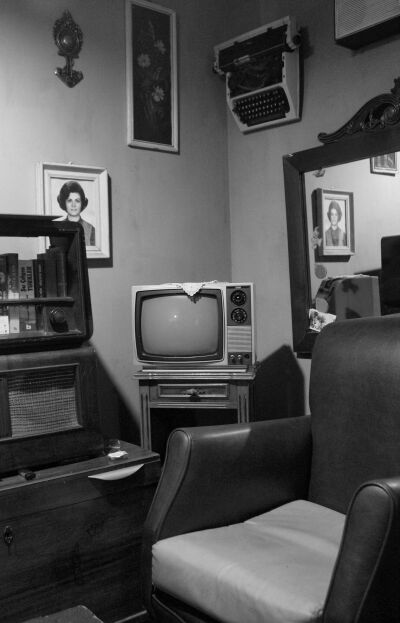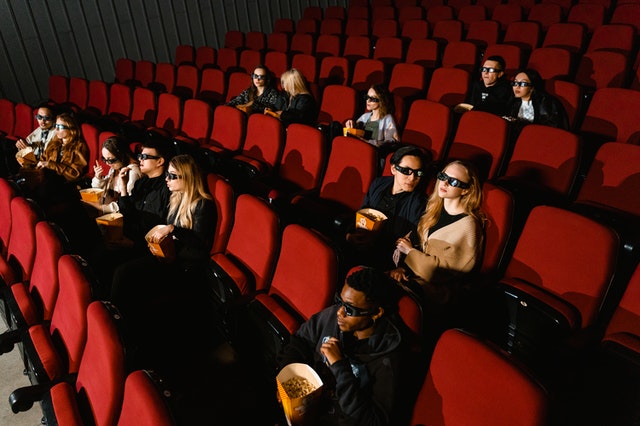Innovating modern cinema
This article is also available in:
![]() Italiano (Italian)
Italiano (Italian)
On a break from work in the Swiss mountains, under the gray sky of early February, I lose myself thinking about modern cinema. What he sees in empty halls (and no, Covid is only partially involved). The one that sees series work more than feature films. Hollywood, like Bollywood or our Cinecittà, bet everything on this. But can modern cinema really go on like this? Or, at least, do we really want to lose a place for fun, socialization, so important as the cinema was in the last century?
Indice
A brief history of modern cinema
When Rossellini was at the “Modern Cinema”
I remember fondly when my father told me about the “Patini” cinema in Castel di Sangro, our hometown, in the days of his childhood. Born in 1937, immediately after the World War II the situation in Europe was anything but rosy. There was so much to rebuild, we lived in a climate of constant tension due to the Cold War.
The United States was the only power in shape, and mass cinema could only come from there. True, we were in the McCarthyism with not very clear rules. This name comes from Senator Joseph McCarthy, who persecuted and imprisoned hundreds of progressives in 1953/54. In a climate of collective political hysteria, every innovative idea was associated with the Communists. Characters such as actor Charlie Chaplin, directors Jules Dassin and Joseph Losey were forced into exile. The rebels, out of all the “Hollywood Ten” (10 screenwriters who appealed to American freedom of expression), rightly ended up in the cage. Walt Disney and others escaped by denouncing colleagues… If you can dream it, surely you can (which then, this phrase is from Imagineer Disney Tom Fitzgerald, not Walt as is commonly thought).
The cinema of the United States to conquer the world

Despite this, America came out with its head held high. The history of cinema teaches us that the major film companies joined forces under the MPEAA (Motion Picture Export Association of America) to subdue opponents in the international market, and the government of the country led by Roosevelt first and Truman then, took advantage of its hegemonic power to circumvent foreign protectionist laws.
But was it all easy? In fact, no. In any case, the public had to be convinced, it was necessary to give them serious reasons to reach the theaters TV grew in importance every year, and for this reason the focus was on technological and stylistic innovation. Among these, color was a cinematic exclusive. This Italian article by Domenico Palattella is interesting, from which I quote:
Color must in fact be understood as the natural evolution of black and white and of Cinema as art, because if Cinema is the art of reality, color also had to necessarily rise to enhance the emotions that only this Art can offer in a way so penetrating, yesterday as today.
Domenico Palattella

Color films increased from 20 to 50% of productions in the early 1950s, becoming almost all in the 1960s. The Kodak Eastman Color film (and, before that, Ferraniacolor in Italy), which cut costs, came to the rescue for its cheapness; but it was only a consequence of what the market was asking for at the time.
Another innovation was the change of format. The 4:3 TV ratio gave way to the more eye-catching panoramic format. Then again, young people were drawn to the new drive-ins. There was a real competition, TV vs Cinema. The baby boom convinced filmmakers to look for every valid way to seduce young people, obviously also by producing TV series: they have always been popular. But the cinema, intended as the theater, was not left to itself.
Attendance at Italian cinemas throughout history
I was saying, my father… He was dying to go to the cinema, and Italy was not America. There was very little money, and 100 lire for a child was really a lot. So he saved himself, and yes… Sometimes you could access the Patini Cinema for free by making eye contact with the owner. But what a desire to go to the cinema!
Is this still the case today? How is the attendance rate of cinemas around the world evolving? For Italy, Istat comes to the rescue. A 2018 report photographs the situation from 1993 to 2017. In this period, the percentage of people who went to the cinema more than 7 times in a year has dropped by almost 20%. On the contrary, the percentage of those who went at least once, has risen. Maybe, only to remember if the place hasn’t changed a bit. This increase was helped by the increase in the female audience (which, strangely, previously seemed less fascinated by the big screen).
Other important data? More and more over-65s go to theaters: from 6.3% in 1993 to 15.2% in 2017. Positive or alarming figure? I’m honest, I can’t convince myself of the answer. To close this quick overview (if you’re curious, read the report), the main reason why you don’t go to the cinema is (coincidentally): “I prefer to watch movies at home”.
Modern cinema costs too much
And unfortunately it is boring now.
But let’s go back a little. Let’s enter our virtual time machine, and let’s go into the first half of the 1900s. Even in Italy, in 1940 on average each inhabitant went to the cinema 8 times a year. In 1950 thirteen, to reach a peak of about 17 times in 1955. From there, a steady decline. 10 admissions per year in 1970, 4 in 1980 to stabilize at around two or less in the last 30 years. Causes? TV (and to follow the internet), but also ticket prices constantly increasing until 1990. And, I might add, lack of real innovation in an increasingly innovative world. Don’t get me wrong: in production there are, and many. It is in the fruition that innovations are lacking, and perhaps it is even more important.
Cinemas in the United States from 1930 to today

A look beyond the ocean? The US market is certainly more authoritative than the Italian one, not least because of the numbers. But it is no different… At the beginning of the 1930s (about 35 years after the opening of the first movie theater, in 1894), over 70% of the population went to the cinema at least once a week. 70%! This percentage dropped to around 40% in 1935, to then exceed 60% again in 1944. Since then, a continuous loss of spectators: in 1950 it was 30%, in 1960 less than twenty. And it was the 1964 the year that, in the US market, marks the stabilization of regular cinema-goers at about 10% of the population.
A clear reason, even in the States, was the price of the ticket. Hollywood has always been an industry whose rulers celebrate themselves as superior to the “plebs”, no matter what you think. And in lean times, they would never have given up part of their millionaire earnings. If there were fewer spectators, the price goes up. Simple. Too bad it’s a dog biting its own tail.
Movie theaters create sociality and sharing
Money was not the only reason, however: there was also a social reason (which returns cyclically): during the Great Depression, in the 1930s, cinema was a way to escape the cold, heat and loneliness. Movie theaters brought together strangers, who one next to the other shared the only social moment available to all.
3D movies, the only real innovation in recent years

I remember the period when stereoscopic cinema, “3D films”, made a comeback the last time. Not many years ago, I was in the middle of my film academy (2011, good times😊). Here, it could be a little breath of freshness. But the idea was rejected, officially because it didn’t work. However, between the need to accustom the public and the time necessary to update theaters and productions, the real reason for not reaching results was (once again) the will of the cinema world to speculate on customers.
Stereoscopy, on balance, was not a way to offer users more. It was a way to dramatically increase the cost of the ticket. And I myself, as much as I loved seeing some films in 3D, often preferred the 2D version just to avoid the 12/13 euro entry. How many like me?
The final solution: unique and economical experience
So, is there a solution? In my opinion, yes, and there are those who support me with more authority. Well, I get off the pedestal: I support him. I will tell you about it in the next few days, my break is over, but it is basically a question of returning to making cinema a unique, unrepeatable, fun, social and, last but not least, budget experience.
Do we want to reform cinema? Let’s make a revolution together? Great things always start from the bottom… And we are in the period when it is easier to do so.
Article F.A.Q.
This name comes from Senator Joseph McCarthy, who persecuted and imprisoned hundreds of progressives in 1953/54. In a climate of collective political hysteria, every innovative idea was associated with the Communists. Characters such as actor Charlie Chaplin, directors Jules Dassin and Joseph Losey were forced into exile. The rebels, out of all the “Hollywood Ten” (10 screenwriters who appealed to American freedom of expression), rightly ended up in the cage. Walt Disney and others escaped by denouncing colleagues… If you can dream it, surely you can do it (which then, this phrase is fromImagineerDisney Tom Fitzgerald, not Walt as is commonly thought).
The history of cinema teaches us that the major film companies joined forces under the MPEAA(Motion Picture Export Association of America) to subdue opponents in the international market, and the government of the country led by Rooseveltfirst and Trumanthen, took advantage of its hegemonic power to circumvent foreign protectionist laws.
The public had to be convinced, it was necessary to give them serious reasons to reach the theaters. TV grew in importance every year, and for this reason the focus was on technological and stylistic innovation. Among these, colorwas a cinematic exclusive.
Domenico Palattella: “Color must in fact be understood as the natural evolution of black and white and of Cinema as art, because if Cinema is the art of reality, color also had to necessarily rise to enhance the emotions that only this Art knows how to offer in such a penetrating way, yesterday as today”.
In Italy, in 1940 on average each inhabitant went to the cinema 8 times a year. In 1950 thirteen, to reach a peak of about 17 times in 1955. From there, a steady decline. 10 admissions per year in 1970, 4 in 1980 to stabilize at around two or less in the last 30 years. Causes? TV (and to follow the internet), but also ticket prices constantly increasing until 1990. And, I might add, lack of real innovation in an increasingly innovative world. Don’t get me wrong: in production there are, and many.It is in the fruition that innovations are lacking, and perhaps it is even more important.
The idea was officially rejected because it did not sell. However, between the need to accustom the public and the time necessary to update theaters and productions, the real reason for not reaching results was (once again) the will of the cinema world to speculate on customers.
Stereoscopy, on balance, was not a way to offer users more. It was a way to dramatically increase the cost of the ticket. And I myself, as much as I loved seeing some films in 3D, often preferred the 2D version just to avoid the 12/13 euro entry. How many like me?
The first cinema hall opened in 1895 in Paris, France, by the Lumière Brothers.


